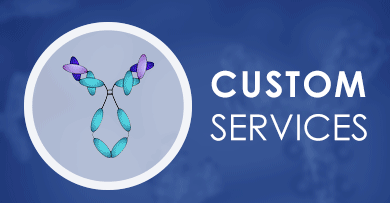 Loading...
Loading...

LGALS3
 Loading...
Loading...Anti-LGALS3 Products
- AbPlus™ Anti-LGALS3 Magnetic Beads (CBL229) (VS-0424-XY171)
-
- Target: LGALS3
- Target Species: Human
- Application: IP, Protein Purification
- AbPlus™ Anti-LGALS3 Magnetic Beads (VS-0724-YC1497) (VS-0724-YC1497)
-
- Target: LGALS3
- Target Species: Human
- Application: IP, Protein Purification
Can't find the products you're looking for? Try to filter in the left sidebar.Filter By Tag
Our customer service representatives are available 24 hours a day, from Monday to Sunday. Contact Us
For Research Use Only. Not For Clinical Use.
Background
Cancer-related genes, Plasma proteins
Intracellular, Secreted (different isoforms)
Cell type enhanced (Proximal enterocytes, Distal enterocytes, Paneth cells)
Group enriched (classical monocyte, intermediate monocyte, non-classical monocyte, myeloid DC, T-reg)
Cell line enhanced (ASC TERT1, CAPAN-2, OE19, SK-MEL-30)
Probably forms homo- or heterodimers. Interacts with DMBT1 (By similarity). Interacts with CD6 and ALCAM (PubMed:24945728). Forms a complex with the ITGA3, ITGB1 and CSPG4. Interacts with LGALS3BP, LYPD3, CYHR1 and UACA. Interacts with TRIM16; this interaction mediates autophagy of damage endomembranes. Interacts with cargo receptor TMED10; the interaction mediates the translocation from the cytoplasm into the ERGIC (endoplasmic reticulum-Golgi intermediate compartment) and thereby secretion (PubMed:32272059).
IgE-binding protein

